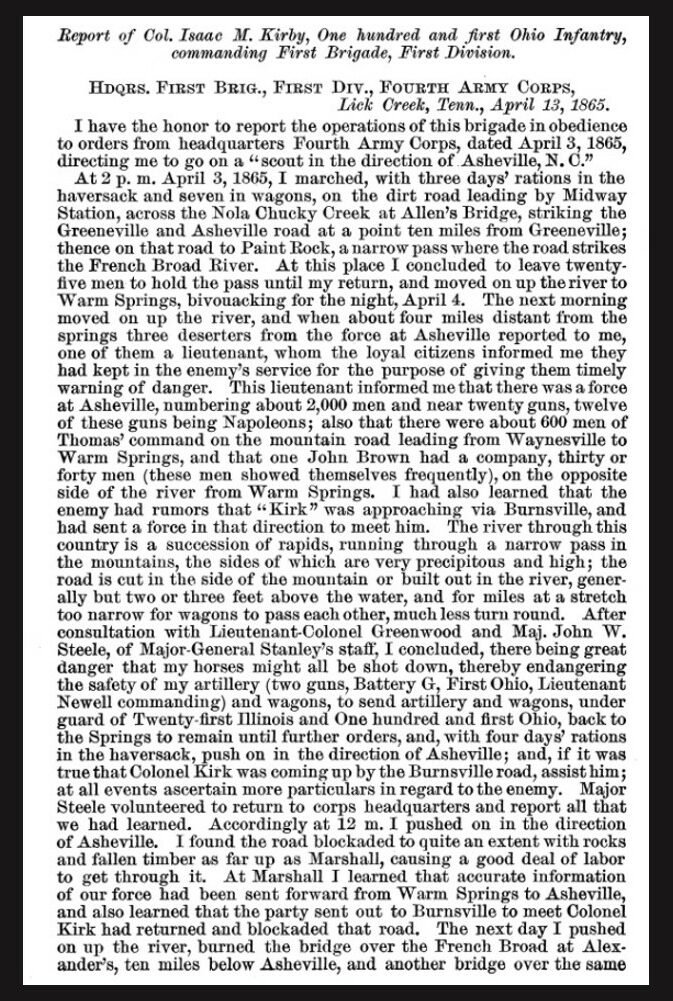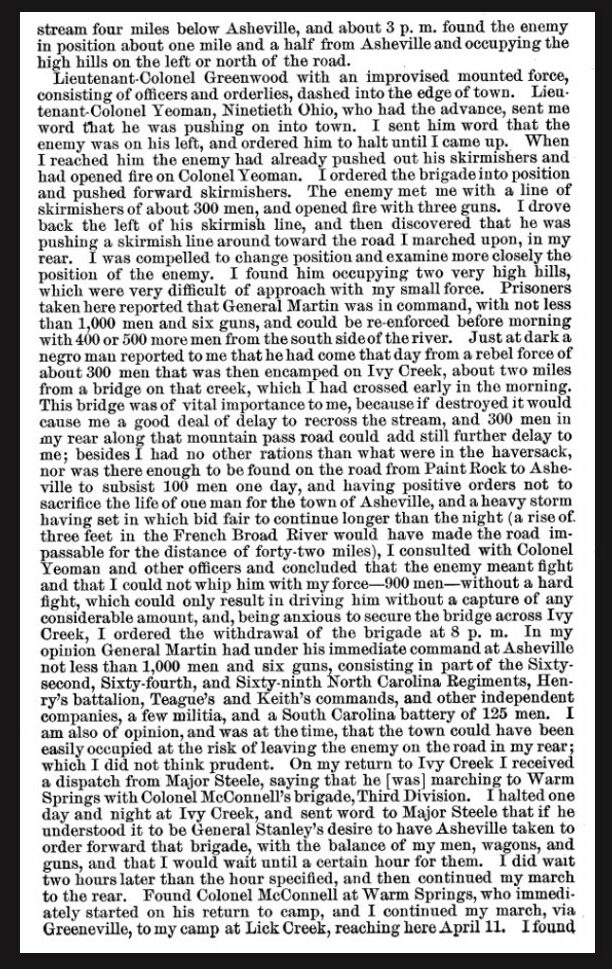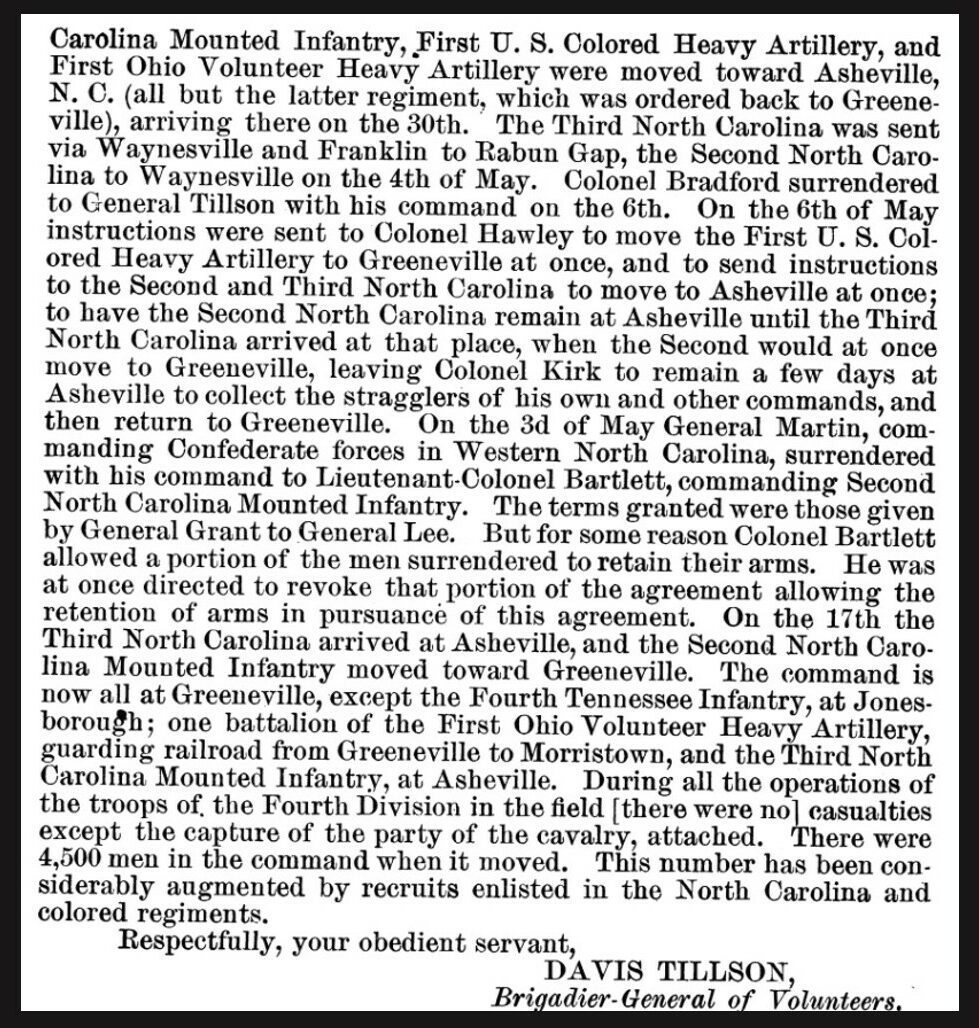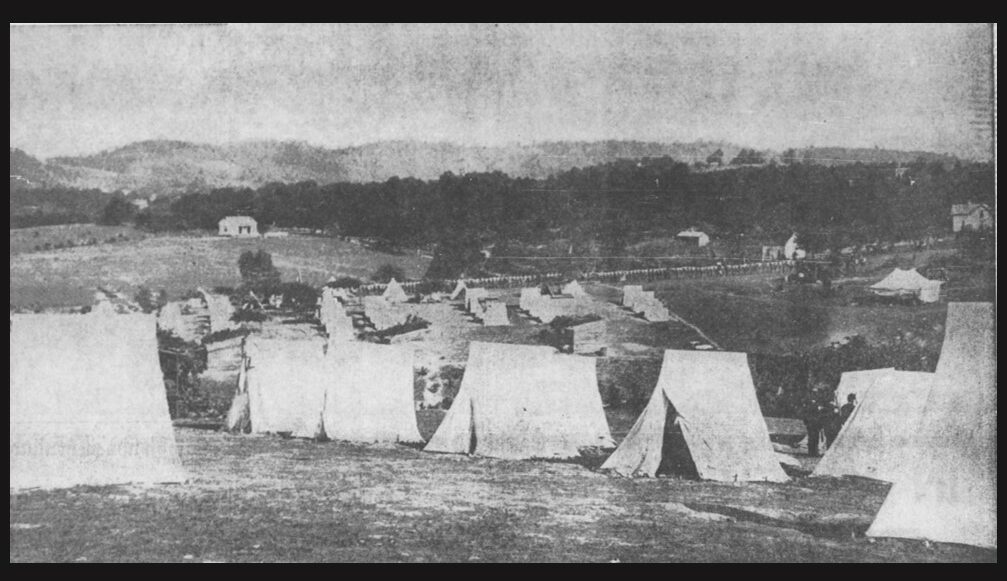
On this day in WNC history: On April 6, 1865, just three days before Robert E. Lee’s army surrendered at Appomattox, war came to Asheville. This conflict outside the city along the French Broad River ultimately amounted to an hours-long fighting standoff, where Union forces withdrew with no known loss of life.
The mountains of WNC had seen only a handful of smaller skirmishes during the Civil War until that time, including the 1864 battle at Deep Creek. Asheville, with a population of 1,100 free and 750 enslaved residents, had been largely untouched by direct action until that point, though it offered a strategic target. Asheville’s armory produced Enfield rifles for the Confederacy until 1863, and its central position in the mountains was even considered as a possible capital for the Confederate government. In the last months of the war, as Stoneman’s Union forces staked through the WNC mountains in a large loop, Col. Isaac Kirby’s brigade of over 900 Union soldiers were dispatched from Greeneville, TN south down the Buncombe Turnpike to capture Asheville “without serious loss of life,” and to “make a demonstration in favor of General Stoneman.”
Confederates of the local Home Guard had entrenched themselves along the turnpike, near the modern UNC Asheville campus, but only numbered somewhere between 100-300. They did have, however, 2-3 cannon, which ultimately helped thwart Kirby’s advance as the Confederates held the high ground in their earthworks. Kirby, under orders not to engage unless he thought success was assured, also believed the Confederates had much greater numbers, and withdrew back to Tennessee, arriving just after the news of Lee’s surrender. Union forces finally reached the city in late April when Stoneman’s cavalry rode through, capturing the artillery and prisoners, and again a few days afterward when General George Kirk’s forces (including the First U.S. Colored Artillery unit) arrived to occupy Asheville until mid-May, opening the doors for those still enslaved in the area to self-emancipate.
Battle of Asheville map by George McCoy, courtesy Buncombe County Special Collections
Report of Col. Isaac Kirby and Brig. Gen. Tillson in “The War of the Rebellion: A Compilation of the Official Records of the Union and Confederate Armies,” v49, no.1.
Report of Col. Isaac Kirby and Brig. Gen. Tillson in “The War of the Rebellion: A Compilation of the Official Records of the Union and Confederate Armies,” v49, no.1.
Report of Col. Isaac Kirby and Brig. Gen. Tillson in “The War of the Rebellion: A Compilation of the Official Records of the Union and Confederate Armies,” v49, no.1.
Union Soldiers stationed at the former Confederate Camp Jeter in Asheville, Asheville Citizen-Times, Jul 17, 1960 (originally from Library of Congress




